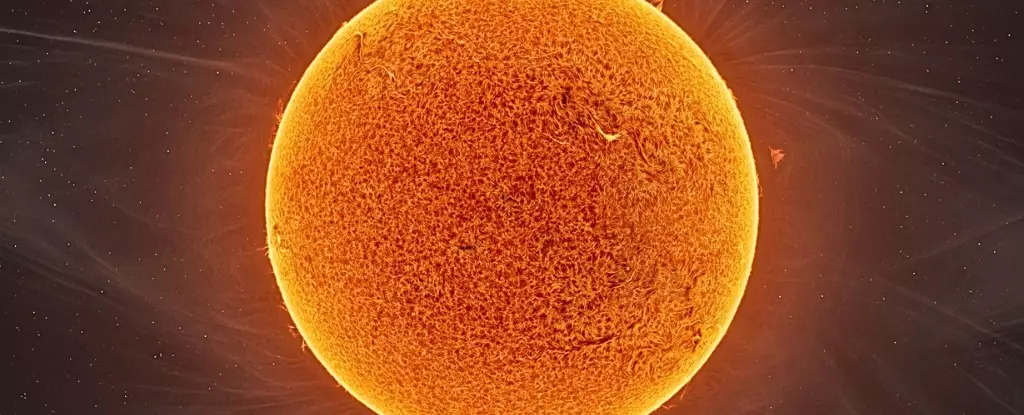Starquakes, the resonant vibrations generated by the explosive release of gas within stars, are akin to the symphonic movements of a celestial orchestra. These immense vibrations provide astronomers with intricate details about a star’s internal structure and evolutionary history, thus revolutionizing our understanding of stellar development. Recent studies, particularly those making use of data from the Kepler space telescope’s K2 mission, illuminate the profound insights starquakes can offer about giant stars, especially within the M67 star cluster, located nearly 3,000 light years from Earth.
The phenomenon of starquakes becomes particularly fascinating when we consider that most stars, including our Sun, possess bubbling outer layers reminiscent of boiling water. In this analogy, gas bubbles rise and burst at the surface, transmitting oscillations throughout the entire star. By studying these vibrations through light fluctuations, scientists can decode the “melody” produced by these cosmic giants, leading to an awakened understanding of their nature.
Reimagining Stellar Evolution: The Implications for Astronomical Studies
For decades, the underlying assumptions surrounding the resonant frequencies in giant stars had been restrictive. The research emerging from the M67 cluster provides groundbreaking revelations, challenging preconceived notions and enhancing the way scientists analyze stellar evolution. Each giant star resonates differently, with significant variations in frequency derived from its physical properties. This newfound depth in stellar seismology reveals a more nuanced picture of star life cycles than ever before.
The critical finding of “small spacings” among frequency signatures presents a new lens through which to view a star’s internal fusion processes. These small spacings closely mirror the structural complexities of a star’s interior. While younger stars like the Sun offer immediate insights into their hydrogen reserves, the situation with red giants was thought to be less informative. However, M67 provided the unexpected: measuring these spacings revealed crucial changes occurring in inner fusion zones, thereby altering our prior understanding entirely.
Starquakes: A Metaphor for Understanding Galactic History
The revelations drawn from the study of starquakes in M67 not only enhance our comprehension of individual stars but also allow greater insights into the Milky Way’s history. Stars can be regarded as cosmic fossils, each carrying a legacy from the environments that birthed them. Through systematic investigation of star clusters, we glean valuable narratives concerning the galaxy’s evolution, informing us about its various periods of formation and growth influenced by the merger of smaller galaxies.
The intricate relationships between stellar populations provide astronomers with the tools to reconstruct the Milky Way’s past. M67 serves as an illustrative model for the broader dynamics at play, offering comparisons to the Sun’s expected evolution over the next several billion years. By refining the techniques via which we discern stellar ages and compositions, we imbue our understanding of galactic development with newfound precision.
Transforming Star Data Into a Treasure Trove of Information
The practical utility of the findings from starquake analysis cannot be overstated. This trailblazing research opens the door to a wealth of existing observational data once deemed unremarkable. With historic seismic observations collected from various celestial bodies, astronomers now have an invaluable opportunity to revisit their findings with fresh insight. By embracing this “auditory” approach to stellar data, scientists can amplify their understanding of celestial mechanics and the intricacies governing stellar interiors.
Moreover, this innovative method has implications beyond mere academic interest; it equips researchers with more refined tools to interpret variable data streams emerging from ongoing and future missions. As humanity continues to delve into the cosmos, returning to past observations with a deeper appreciation for the nuances of starquakes revolutionizes the methodologies of stellar astronomy.
Connecting the Stars: A Future Filled with Potential
The study of starquakes not only sheds light on individual celestial entities but also intricately links them to the grand narrative of the universe. By identifying the unique “tunes” of various stars, scientists are afforded a more holistic view of galactic history, ultimately piecing together the story of formation, growth, and transformation across time.
With each discovery, we become increasingly aware of the interconnectedness of stars and the cosmos at large. This expanded understanding emboldens our quest to explore and comprehend the universe, revealing a celestial symphony filled with lessons waiting to be uncovered. Embracing this rich repository of information paves the way for exciting future explorations, pushing the boundaries of astronomical knowledge ever further.


Leave a Reply